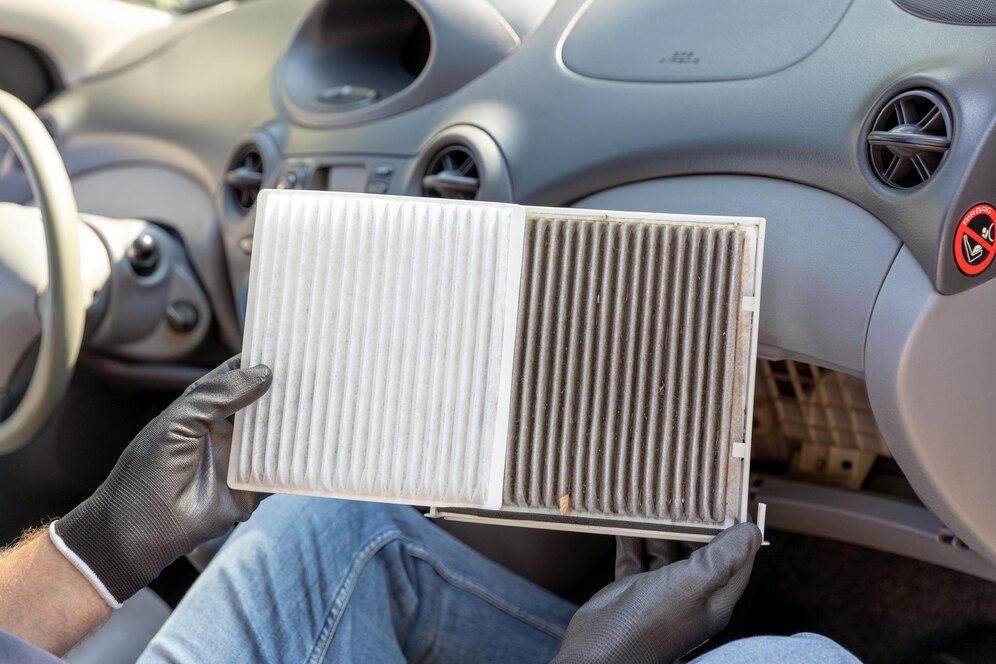Introduction
When summer hits and temperatures soar, there’s nothing worse than discovering your car’s air conditioning (AC) isn’t working. Whether your AC is blowing hot air, not turning on, or making strange noises, the frustration is real. A non-functioning AC system not only makes driving uncomfortable, but it can also signal deeper mechanical issues.In this article, we’ll walk you through the most common reasons your car AC might not be working, what symptoms to look for, and what you can do about them — whether it’s a DIY fix or time to visit a mechanic.

Low or Leaking Refrigerant
AC blows warm or less cold air
Hissing sounds under the hood
AC works temporarily and then stops
Causes:
Refrigerant (also known as Freon or R134a) is the lifeblood of your AC system. If there’s not enough of it, the system can’t cool the air effectively. Leaks in hoses, seals, or the condenser are common culprits.A professional should perform a leak test, repair the leak, and recharge the refrigerant to the correct level.
Faulty Compressor
AC doesn’t blow cold air at all
Strange noises when AC is on
AC clutch not engaging
Causes:
The compressor is responsible for circulating refrigerant through the AC system. Over time, it can wear out, especially if the system hasn’t been used regularly. It can also fail due to low refrigerant levels or electrical issues.If the compressor is faulty, it typically needs to be replaced. Ensure the system is flushed to prevent contamination from debris.
Electrical Issues or Blown Fuse
AC doesn’t turn on at all
Dashboard buttons are unresponsive
Fan doesn’t blow
Causes:
A blown fuse, bad relay, or corroded wiring can stop your AC from working altogether. Modern cars rely heavily on electronic components to control the AC system.
Fix:
Inspect the fuses and relays associated with the AC system (usually found in the fuse box under the dashboard or hood). Replace any faulty components.
Broken Condenser
AC blows hot air
Visible debris or damage on the front of the car’s radiator area
Causes:
The condenser cools the refrigerant after it’s compressed. If it’s blocked by debris or has suffered physical damage (like from rocks or an accident), it won’t function properly.
Fix:
Remove debris from the front grille. If the condenser is damaged, it must be replaced.
Clogged Cabin Air Filter
Weak airflow even when AC is on high
Unusual smells from vents
Dust buildup inside the car
Causes:
The cabin air filter traps dust, pollen, and debris. If it gets too dirty, it can restrict airflow, making it seem like your AC isn’t working properly.
Fix:
Replace the cabin air filter — a simple, inexpensive maintenance task you can usually do yourself.
Faulty AC Blower Motor or Fan
No airflow from vents
AC sounds like it’s on, but no air is moving
Whirring or grinding noise from dashboard
Causes:
The blower motor is what pushes air through the vents. If it fails, you won’t feel airflow, even if the AC is otherwise functional.
Fix:
Check if the blower motor is receiving power. If it’s defective, replacement is necessary.
Malfunctioning AC Controls or Climate Control Module
AC temperature settings don’t respond
Blower speed can’t be adjusted
Digital climate control screen glitches
Causes:
Control panels or climate control modules can malfunction due to software bugs, internal failure, or damaged connectors.
Fix:
Try resetting the car’s electrical system (by disconnecting the battery for a few minutes). If the issue persists, a professional scan tool can diagnose the exact problem.
Bad Expansion Valve or Orifice Tube
Inconsistent cooling
Frost on AC lines
AC turns cold and then warm repeatedly
Causes:
The expansion valve or orifice tube regulates the flow of refrigerant. If it’s stuck open or closed, the system won’t cool properly.
Fix:
Diagnosis and replacement require disassembly of the AC system, so it’s best handled by a qualified technician.
AC System Contamination
Poor performance after a recent AC repair
Unusual noises
Compressor failure shortly after recharge
Causes:
Moisture, air, or debris inside the AC system can cause performance issues and damage internal components.
Fix:
The system must be fully evacuated, flushed, and recharged by a certified technician using professional AC servicing equipment.
How to Prevent AC Problems
Run the AC at least once a week, even in winter
Replace cabin air filters every 12,000–15,000 miles
Get your AC system checked annually
Don’t ignore weak airflow or unusual noises

Conclusion:
A broken car AC can be more than just uncomfortable — it may point to a serious underlying issue. From low refrigerant and electrical faults to damaged compressors or filters, there are many potential causes. By recognizing the symptoms and acting early, you can avoid expensive repairs and stay cool on the road.If you’re unsure what’s wrong, consult a certified mechanic. A quick inspection and proper diagnosis can save you money and ensure your comfort all year round.

